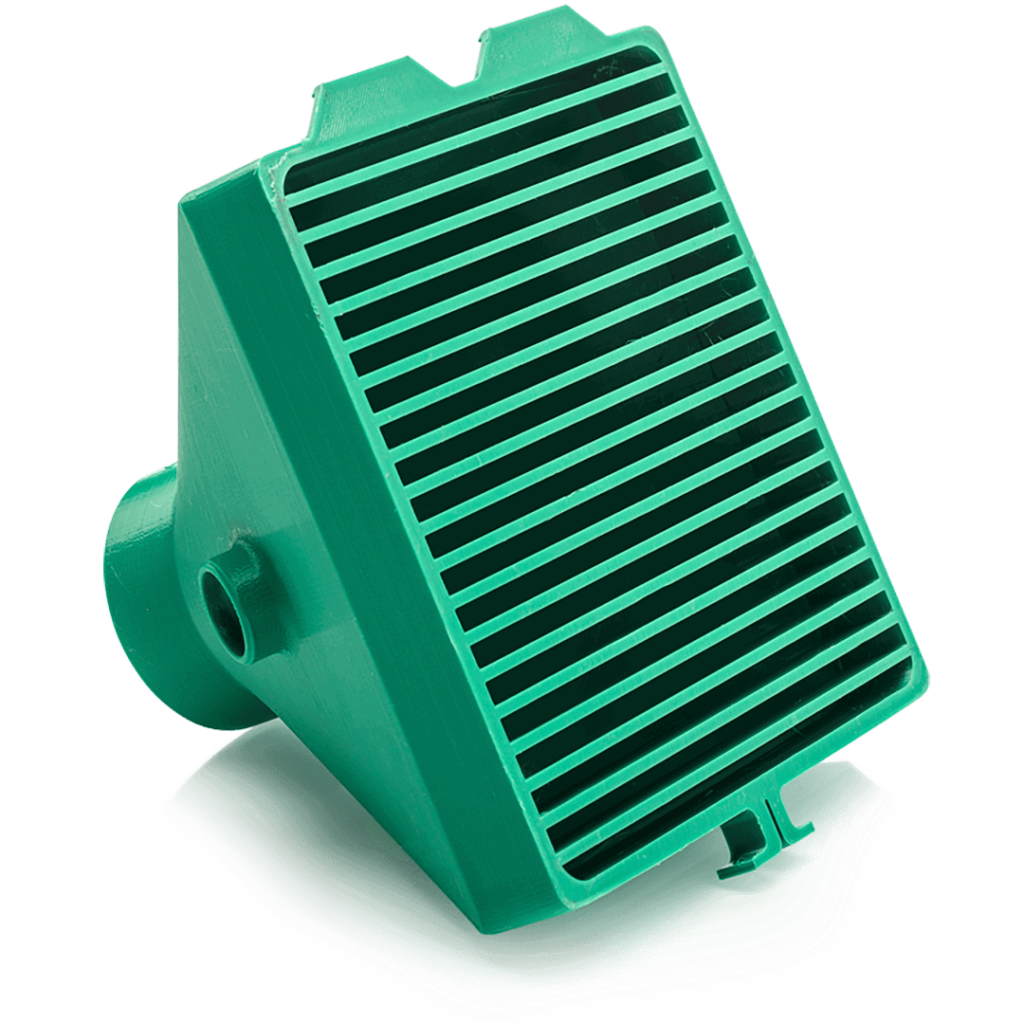PETG combines strength, durability and ease of use for 3D printing projects. Glycol added to PET plastic modifies the material, improving its suitability for printing while keeping it accessible. You should consider it when looking for strong builds with fewer printing challenges.
Top PETG products
Check out these PETG formulations for your projects:
Introduction to PETG
PETG starts with a chemical change that transforms standard bottle plastic for printing needs. Glycol breaks the crystalline structure of PET, creating a polymer that resists cracking and fuses layers effectively when printed. Manufacturers incorporate glycol during polymerisation, changing molecular chains to enhance printing performance.

Printers need temperatures between 220-250°C, with beds at 70-80°C — settings most consumer machines handle without modifications. Changing to PETG opens options for functional parts needing durability. Consider using PETG when printing items requiring clarity, impact, or chemical resistance while maintaining straightforward parameters.
Properties of PETG
Strength and durability
PETG resists impact, making it suitable for parts under stress or handling. Its load-bearing components hold up when alternative materials fail. PETG parts flex slightly before returning to shape without breaking.
Models keep their dimensions without warping or layer separation, even in large formats with overhanging features.
Environmental resilience
PETG works in varied conditions, making it useful for practical applications. Outdoor fixtures, bathroom accessories, and household items stay stable for months, performing despite humidity changes.
Printing PETG components presents minimal challenges due to weather exposure. UV-resistant PETG variants offer protection against sunlight degradation for outdoor installations.
Heat performance
PETG maintains structure at temperatures where other filaments compromise. Summer heat poses minimal risk to PETG parts, which keep their shape until reaching approximately 70°C.
Room-temperature liquids safely contact PETG prints without compromising structure. Higher-temperature applications need caution, as approaching PETG’s glass transition temperature of around 80°C causes softening and potential deformation.
Applications of PETG
Functional components
Moving parts printed in PETG provide smooth operation in hinges, clips, fasteners, and mechanical assemblies. Gears mesh with minimal wear, latches operate reliably, and mounting brackets maintain grip over repeated use cycles.
Replacement parts for household items function long-term, solving problems when original equipment fails or becomes unavailable. Custom tool holders, organisation systems, and functional upgrades work well using materials capable of withstanding regular handling.
Food safety considerations
While commercially extruded PETG sheet receives food-safe certification, 3D-printed versions present different considerations. Gaps between layers create cleaning challenges, raising safety concerns despite the base material’s approved status.
When designing PETG containers for food-adjacent applications, consider secondary barriers like silicone liners. Food-grade coatings might provide solutions for specific uses, though testing remains essential before regular food contact.
Healthcare applications
PETG gained popularity for creating protective equipment resistant to cleaning agents and repeated sanitisation. Medical settings benefit from PETG’s ability to withstand disinfectants, which is a requirement it meets compared to many alternatives.
Advantages of using PETG
Forgiving print behaviour
PETG accepts small changes in settings without failing prints or losing bed adhesion. When you adjust temperature, speed or cooling slightly, your prints still complete successfully — unlike materials that need perfect calibration.
Large models print reliably with PETG, showing strong layer adhesion and almost no warping during long sessions. Overnight printing becomes practical with PETG when building substantial projects requiring maximum build volume.
Performance characteristics
PETG prints are weighty and solid, offering presence compared to lighter alternatives. This character benefits practical applications, with parts maintaining functionality in varied conditions.
Parts perform when forces distribute across layers instead of separating them. Z-axis strength approaches horizontal strength more closely than many materials, creating more uniform mechanical properties regardless of print orientation.
Visual qualities
Light passes through PETG, enabling possibilities for illuminated projects or translucent functional components. LED projects benefit from this characteristic, with light diffusion qualities ideal for indicator covers or decorative applications.
Colour options range from transparent to opaque, with varying transparency possible using different print settings and finishing techniques. Depending on printing parameters and post-processing methods, surface finishes span from satin to polished.
Tips for printing with PETG
Temperature settings
Test temperatures between 230°C and 245°C to determine the ideal hotend settings for your specific PETG brand and printer setup. Start with manufacturer recommendations and adjust based on observed stringing, layer adhesion strength, and surface quality.
Heat beds to 70-75°C for first layer adhesion without ”elephant foot’ around print bases. Glass surfaces work with PETG when appropriately prepared, using adhesion aids like glue sticks or PVA solutions.
Managing stringing
Optimise retraction settings, beginning with a 2mm distance at 40mm/s for direct drive systems or 5mm at 45mm/s for Bowden setups. Small test prints save time during calibration, allowing quick assessment without wasting material.
Position parts on build plates to minimise travel distances between components. Slicer settings like “combing” or “avoid crossing perimeters” reduce stringing by keeping nozzle movements within printed areas whenever possible.
Do not print on bare glass
Coat your glass build plate with hair spray, glue, or another adhesive to prevent the PETG from touching it. If the PETG fuses with the glass, it will be impossible to remove it from the build platform without damaging it.
Cooling considerations
Set cooling fans to reduced speeds of around 30-40% rather than the maximum settings used for other filaments. Overhangs benefit from airflow, while vertical walls and structural elements print stronger with limited cooling during deposition.
Bridge sections require balanced cooling — enough to solidify spanning filament without cooling adjacent layers. Adjust your fan speed adjustments using slicer settings, increasing cooling during bridging operations before returning to normal values.
Finishing techniques
Sand PETG parts with progressively finer papers from 220 to 1000+ grit, using wet methods to minimise dust while revealing smooth surfaces. For optimal results, most projects benefit from two complete grit sequences.
Apply plastic polishing compounds to sanded PETG surfaces for transparent, glass-like finishes. Many standard vehicle plastic compounds work effectively (but do your research first). To protect the finish, you can coat it with epoxy.
Top image credit: Bambu Lab




